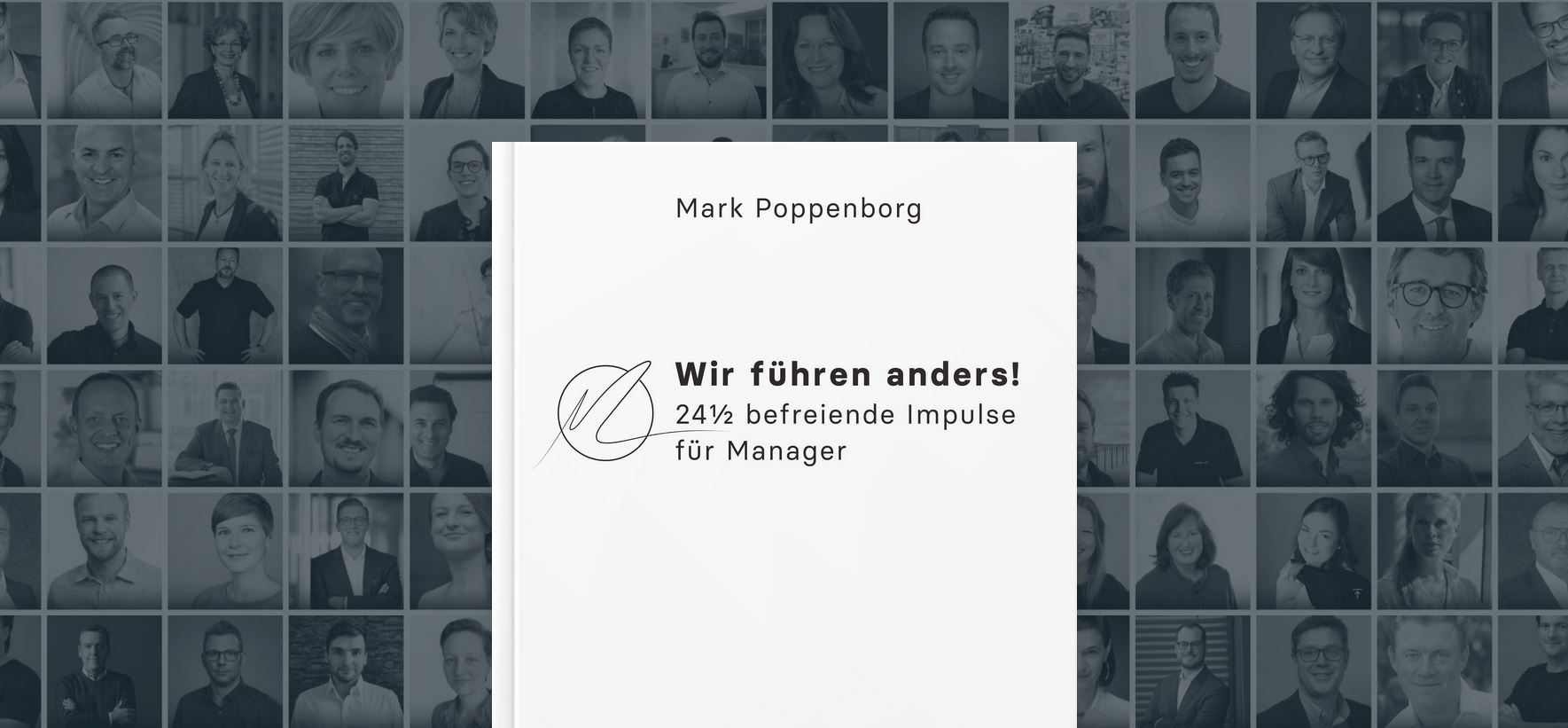Founders Put Their Stamp on an Organization
That may sound trivial, but the fact is that founders use their ideas, their courage and their convictions to get their company up and running.
Thus, it’s only natural when that company becomes oriented solely toward the founder’s perspectives. The employees feel attracted to both the ideals of the company and to the person who founded it. They are dedicated to supporting and advancing the plans of the entrepreneur. The original idea behind the company – its vision, its mission, its purpose – is the all-encompassing polar star guiding the firm through thick and thin. Everyone puts their unconditional trust in the person behind the wheel, the founder: Columbus.
The journey begins at full force, with one goal in mind: to fulfill the founder’s original idea. Everyone involved, internally and externally, feels the pull of these certain convictions. Success just magically … happens.
Of course, everyone is well aware that this success is based on the strength of Columbus and their fantastic ideas! They are the hero in this narrative. We, the organization, we’re only their proud agents who contribute to the triumphs.
Eventually, a pedestal is erected, generally only a mental and virtual one (but sometimes a real and tangible one). It represents the physical manifestation of the company’s dogma: The presence of our founder is decisive to our well-being and to the prosperity (or demise) of our system.
But what happens if, someday, the founder wants to retire?
Is the founder retiring because they no longer can envision a future for the company, now that the original vision has been maxed out?
Sometimes it suffices to worry about this happening at some future point in time to cause the company to tumble into darkness and chaos.
Disorientation ensues. Fear. The call may be heard for a “New Columbus,” a new polar star, to guide the company out of chaos and secure its future.
N.B. How to Ensure the Survival of a Company
Imagine a company as an organism that has but one simple goal: to survive. In its initial years, this organism finds out what is needed to keep it alive, usually on top, making it bigger and stronger. In our case, this is the Columbus mentioned above, the one with the big ideas.
The organism will thus do almost anything to preserve its successful strategy. If things go sour or if its very existence is endangered, it inevitably has a panic attack: Its air is cut off, making it difficult to breathe, it hyperventilates and can no longer think straight. It is paralyzed by fright.
Does that sound exaggerated to you? Maybe, but it’s not – it’s what happens almost every day. Most employees at such companies do not use these dramatic terms, even though the organization is in the midst of such throes.
For the firm to once again function properly, it must somehow reestablish normalcy. The solution: We need a New Columbus! Right now!
This mechanism, called “more-of-the-same-old-stuff,” is extremely energy efficient since the basic orientation need not change at all. Everything gets to stay the same.
Of course, the problem is that such an organization cannot think ahead; it simply presumes that the future will function exactly as the past did. But that usually turns out to be a fairy-tale, well-intentioned but a fairy-tale nevertheless.
Back to Columbus and Retirement
What options are available in such a situation? How can a company survive – and thrive – in the “post-Columbus” era?
- Find a New Columbus with a new and attractive vision for the company’s future.
- Come up internally with a new vision supported by the entire workforce.
- Change the basic organizational pattern by dividing up the company into several smaller units, each of which gets its own mini-Columbus at the helm.
- Forgo the common vision and reorient the company to the prevailing market conditions.
- Forgo installing a Columbus altogether and go forward without a spearhead.
Let’s take a closer look at what that means:
Option 1: Find a New Columbus with a new and attractive vision for the company’s future.
This entails searching intensively for a charismatic and well-accepted person from within the ranks of the company whom everyone would openly and freely follow. Someone with new ideas that fit the existing structure of the organization. Put that person on the throne and request that they announce their vision for the future upon ascension.
A little too, let’s say, pithy. A vision and conviction that excites everyone – you either have it or you don’t. It’s like a feeling: You can’t command it into existence.
If an organization does succeed in crowning its New Columbus and that person fails to come up with a viable vision for the company, well, then you’re just out of luck. Too bad, but what are you going to do? Renewed appeals, requests, calls to present the overdue vision ends up producing bad business theater: The New Columbus thinks up some supposedly new and innovative strategy (likely after consulting with a committee or an external consultant) and has it widely distributed.
The best-case scenario is that, indeed, the New Columbus produces a new conviction that feels right. And if that conviction resonates with the workforce, then all is well, right? However, and here’s the thing: What is usually ignored is the fact that such success stories are the product of chance, not deliberation.
People love to create causality where none is present, if only to better explain the hidden secrets of the world and hopefully get them under control. Yet, whether a conviction comes true or not is neither predictable nor determinable. If it by any chance does succeed, then the conclusion is made that the process behind it was responsible, leading to the process being repeated and copied to death. A new “best practice” is born, even though it’s not best at all. Chance becomes the mother of a new standard. The desire to reduce complexity is a fiery pitfall.
The rule is that the New Columbus does not dream up some new and vibrant vision; the end product, following a long and protracted, costly development process, is likely a document that is DOA, full of empty and cliched phrases, that somehow satisfies the expectations but fails to provide any concrete guidelines. Occasionally, it will be rummaged out of the bottom drawer at the all-hands meeting, only to conclude that, unfortunately, the company has failed to properly implement the wonderful vision of the New Columbus. The search for the guilty begins in earnest but at precisely the wrong place: The path isn’t at fault, the goal is. What happens then, you can imagine: The wrong heads begin to roll.
Option 2: Come up internally with a new vision supported by the entire workforce.
This solution exhibits some parallels to variation (1) above. Here, too, the principal problem is that visions cannot be prescribed, making this approach as shaky as the previous one. Here, however, the situation is exacerbated by the fact that everyone is apparently agreed, if not excited, to join in. The dreaded “unanimity trap” snaps shut, making the subsequent process even longer, costlier and more tedious than ever. In the end, weariness begets a fatal decision.
Later, once everyone has finally concluded that, alas, there is no such thing as an all-encompassing vision (or if there is, only by chance) – even though these thoughts cannot be spoken aloud – a billboard is commissioned with whatever smallest common denominator has emerged from the discussions. The implication here is that this new “vision” effectively doesn’t change a thing in how the company’s business is going to be done since no one is truly convinced of its utility.
Option 3: Change the basic organizational pattern by dividing up the company into several smaller units, each of which gets its own mini-Columbus at the helm.
The driving idea behind this option is to prevent the company from becoming dependent on one individual. Maybe Columbus’ exit has severely traumatized the company and its staff, who conclude: “That should never happen to us again!” Self-preservation causes them to modify their organizational structure by retaining the core while reducing its clout.
This would seem to be an interesting approach, and indeed it has been observed frequently in the recent past. Whether it’s a good idea or less of a good idea depends on how all those mini-Columbuses (Columbi? Columbini?) work out.
This truth remains: Ideas, visions and convictions are always attached to a human being, namely, to an individual human being. It’s personal and resembles a feeling. Whether I love or hate someone or don’t really care one way or the other, is not something I can pick and choose. Of course, I can work on changing my feelings and my convictions, but it is impossible for me to predict whether I will succeed in that endeavor. There can be no certainty that the outcome will match my intention.
Thus, as with option (1), if a mini-Columbus has a vision that surfaces from their inner being and has the radiant power to unfold its magic in others, then great! If that is not the case, then watch out for the next act of business theater, the willful waste of resources and demotivation everywhere.
Option 4: Forgo the common vision and reorient the company to the prevailing market conditions.
Also a good idea. After all, the market determines whether a company survives or not. The question is: What market are we talking about here?
Whether a company sells refrigerators or boats, determining which market to orient itself to must be a conscious and strategic decision dictated solely by the organization in question. Thus, a company must stand behind any decision concerning the market it chooses to follow and learn from its own experiences how to successfully deal with the respective external forces emanating from that particular market: the workforce, competition, technology, legal conditions, etc.
Note that it is important to differentiate between “customer” and “market.” Fulfilling the wishes of a customer is not the same thing as reacting to market demands – a common mistake. “Customer focus” means reacting to the individual demands made by a customer and adapting one’s portfolio to reflect this, all while optimizing the company’s value creation in the process. “Market focus,” on the other hand, means continually positioning the company proactively in the market to offer a range of products that fit the needs of many different customers. Customer focus is based on broad individual needs, whereas market focus is based on a strategic bet about what customers want today and will want in the future.
The question whether a company can be successful without a unified vision – or whether that automatically turns the company into the puppet of customers’ whims – is presently unanswered. Generally speaking, a vision is considered a sign of strength, something that renders you big and strong and invincible. But does every company really need a polar star to guide it? That may be a tad too slick.
On the other hand, it remains unclear whether the probability of getting cornered and becoming the customers’ puppet goes up significantly if a company waives having a clear focus. In other words, if a company fails to come up with and apply a hard and fast orientation, then it necessarily will have to get help from outside the firm – which is generally not the market but all its individual customers with their diverse interests through which the company maintains contact with the market.
Option 5: Forgo installing a Columbus altogether and go forward without a spearhead.
This, too, is an alternative that crops up again and again. One way to debunk this variant is to say: Failing to install a spearhead is, in a sense, impossible, since there is at least one person who owns the company and thus is formally in charge.
The somewhat more detailed retort would be: It doesn’t help the owner or director of a company just to act as though they could simply fire everyone and close the firm. Because, of course, they could, anytime. The only proper route to go is to reduce one’s formal power and leverage to a minimum or simply fail to exercise it.
But is that a good idea?
As to the first part of this option– forgoing the installation of a Columbus – it should be noted that an empty seat on the throne carries with it the danger that someone may usurp it, at first perhaps stealthily, but then building up such strength and power than no way leads around them. Of course, this risk is present only when the throne has truly been vacated.
However, should the company succeed in reorienting itself without the need for a throne, then those risks and dangers disappear. Reorientation, by the way, means creating a structure that provides orientation, puts responsibility on many shoulders and installs a leadership that acts flexibly according to what is relevant rather than formally correct and dogmatic.
Here is an example of such a leadership approach: Instead of introducing a “Head of Marketing” who assumes the responsibility for all marketing activities within the company, one could distribute the marketing tasks along with the respective responsibilities. No single person would be tasked with everything, but a group of people would assume pieces of the responsibility. The coupling of person with role is not a dogmatic matter or even necessarily a long-term one, but rather one adapted to the respective situation and dependent on other roles. In order words: The colleague who last year had a fantastic idea about how to design the upcoming trade-show booth and who appropriated that role for the time being may not have a good idea the next year’s booth and passes the role on to someone else.
What remains?
After a sober look at all of the above-mentioned options (and, in fact, there may be many more one could mention), what remains? What to do when Columbus retires?
There is no one right answer; every organization is unique and has its own patterns. An intelligent answer to the question can be proffered only after having undertaken the monumental task of understanding what is really going on within the respective firm. You need to peer into its DNA to determine and understand its unique corporate culture.
Even if that tidbit of advice fails to produce a definitive statement on your part (in the sense of “Oh, so that’s how it’s done!”), we hope that this article was still able to contribute to your better recognizing the pitfalls of some approaches and empowering you to search for new ideas to improve the economic health of your company.





